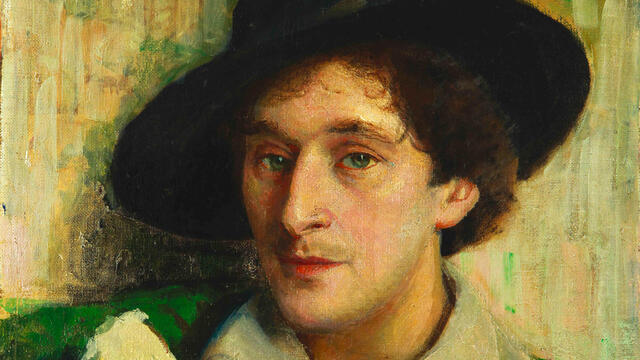Marc Chagall

Marc Chagall is perhaps the best-known Jewish artist of the modern period. Born and raised in Vitebsk (today in Belarus) to a traditional family, he attended heder and later Vitebsk’s modern Russian high school. His artistic talents became evident early; he studied at Yehudah Pen’s art school and, between 1907 and 1910, at Russia’s premier schools for the arts in St. Petersburg, where he was influenced by Leon Bakst’s approach to “the liberation of color.” Living in Paris from 1910 to 1914, Chagall quickly made a strong impression in the French and German avant-garde art scenes. Caught in Russia by the outbreak of the war, he drew close to the burgeoning Jewish national renaissance scene, beginning a practice of illustrating Jewish books to which he would return particularly in the postwar era. In 1918, he was swept up by revolutionary fervor and, working with the Bolshevik regime, established the People’s Art College in Vitebsk that drew other leading pro-revolutionary avant-garde artists, including El Lissitzky. In this interlude, he also produced his single most fabled work of Jewish art in this period and context, his large murals for the GOSET Soviet Yiddish modernist theater. Chagall soon became disillusioned and left the Soviet Union permanently in 1922. He lived the rest of his life in France, except for the years between 1941 and 1948, when he lived in the United States. Chagall achieved global renown for his distinctive art. It is at once playful, color-drenched, filled with fantastic, beautiful, or grotesque figures, psychologically resonant, and gesturing to irreducibly personal experience, often drawing on his childhood in Vitebsk. Though he rejected any narrow definitional bounds on his own work, Chagall engaged productively throughout his life with the question of what constituted “Jewish art.” Courting controversy for his complex blending of Jewish and Christian iconography at times and becoming a truly global figure in the 1950s, Chagall also fostered a close relationship with both the Yiddish literary world—illustrating works by his friend, the distinguished Yiddish poet, Abraham Sutzkever—and with the young State of Israel, as epitomized by his renowned stained-glass windows at Hadassah Hospital in Ein Kerem, Jerusalem.

